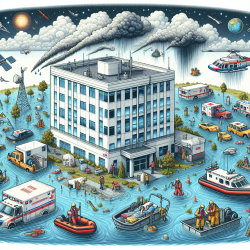The aftermath of Hurricane Harvey in 2017 left a significant mark not only on the landscape of Texas but also on the health of its residents. A recent study titled "Emergency Department visits associated with satellite observed flooding during and following Hurricane Harvey" sheds light on the critical role that satellite data can play in understanding and mitigating health risks associated with flooding.
The Study's Insights
The study evaluated emergency department (ED) visits before, during, and after the flooding caused by Hurricane Harvey. By employing satellite data to map inundation extents, researchers were able to correlate specific health risks with flooded areas. The findings were striking:
- Increased ED Visits: Flooding was associated with higher rates of ED visits for carbon monoxide poisoning, insect bites, dehydration, hypothermia, intestinal infectious diseases, and pregnancy complications.
- Prolonged Health Risks: Even a month after the floodwaters receded, risks for pregnancy complications and insect bites remained elevated in flooded areas.
- Use of Satellite Data: The integration of Earth observations with ED visit data provided a clearer picture of short-term health risks during and after flooding events.
Practical Applications for Practitioners
The findings from this study offer valuable insights for healthcare practitioners and emergency responders:
- Enhanced Preparedness: Understanding the specific health risks associated with flooding can help practitioners develop targeted preparedness measures. For instance, increasing awareness about carbon monoxide poisoning during power outages can save lives.
- Triage and Resource Allocation: By identifying areas at higher risk for certain health issues post-flooding, medical resources can be allocated more efficiently.
- Further Research Opportunities: Practitioners are encouraged to delve deeper into the long-term health impacts of flooding and explore additional uses of satellite data in disaster response.
The Role of Technology in Disaster Response
This study highlights the transformative potential of technology in disaster management. Satellite data provides timely information that can be crucial for both immediate response efforts and long-term recovery planning. As climate change continues to increase the frequency and intensity of storms, integrating technological advancements into disaster preparedness strategies will be essential.










